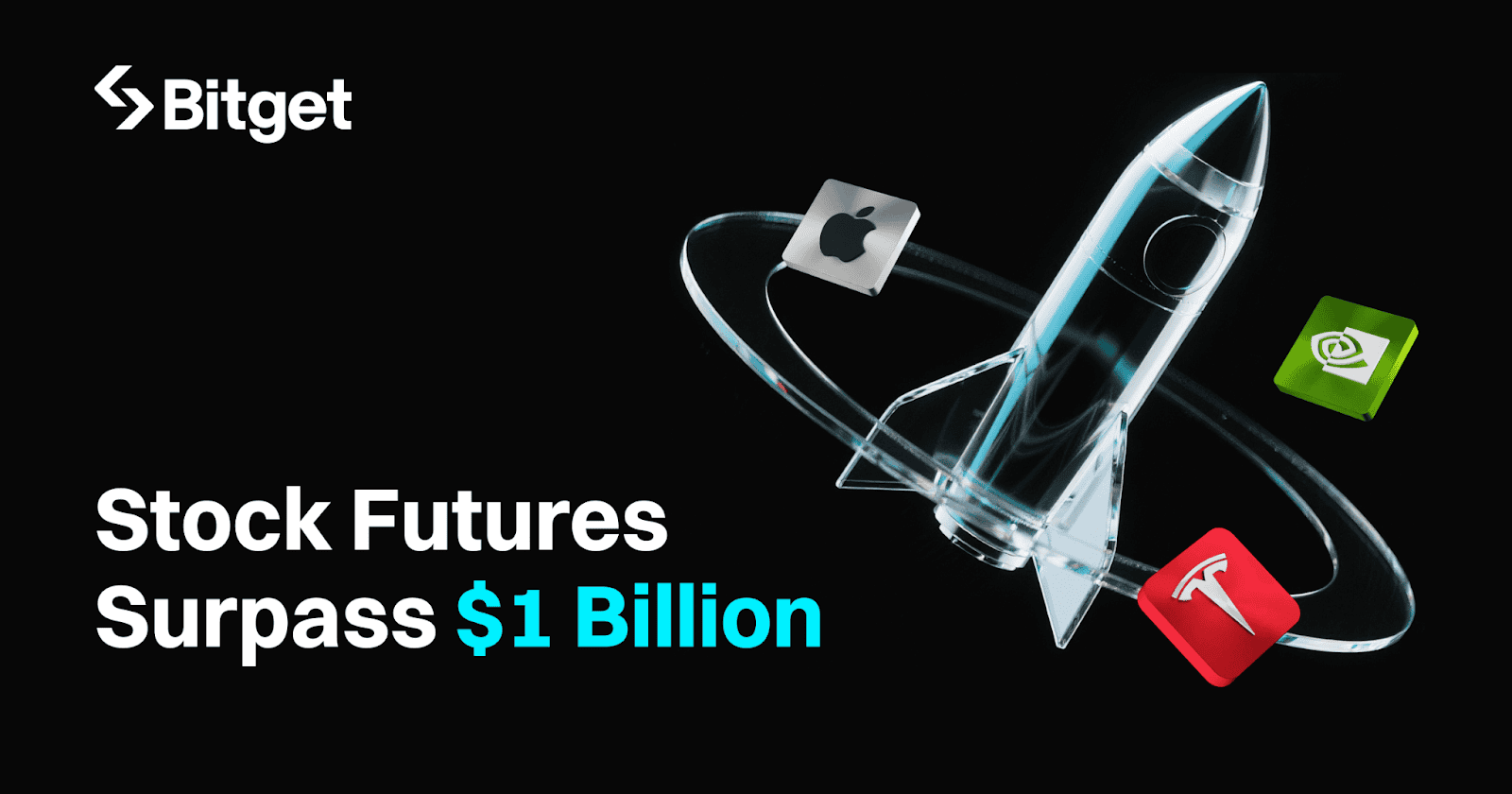
Bitget, the world’s largest Universal Exchange (UEX), announces trading in its US stock-linked futures has passed $300 million in cumulative volume on the platform, doubling in just two weeks globally. The milestone points to fast adoption of stock-style exposure inside a crypto app by users who already fund accounts in USDT and switch between crypto and stock-linked markets on mobile.
| “Crossing the $1 billion mark in such a short time shows how fast traders are embracing stock futures as part of a unified digital trading experience,” said Gracy Chen, CEO of Bitget. “It’s a signal that the line between traditional markets and digital assets is disappearing, and our Universal Exchange model is where that convergence is happening first.” |
What happened
- Bitget launched USDT-margined perpetual futures on 25 US stocks (e.g., Apple, Amazon, Meta, Microsoft) and later added contracts like NFLXUSDT, JDUSDT and QQQUSDT. The product targets traders who want stocks exposure but prefer a 24/7 crypto interface.
- The exchange frames the growth as part of a broader “Universal Exchange (UEX)” model that hosts crypto, tokenized/stock-linked products, and on-chain markets in one place.
Why this matter
Many traders, including those in the African region, have already moved from local fiat to USDT using marketplace sellers on P2P (bank transfer or popular wallets, where supported). Stock-linked futures let them express a view on familiar tickers like Apple (AAPL), Nvidia (NVDA), Tesla (TSLA) without leaving the same app they use for BTC/ETH/SOL. In short: one interface, multiple markets, no brokers, no spreads, just one app.
What these products are ( and aren’t)
- Perpetual “stock futures” on Bitget are derivatives margined in USDT that track selected US equities. They don’t give you company shares or dividends; they mirror price moves so you can go long/short with defined margin and fees. Bitget cites fees “at or below 0.0065%,” and leverage up to 25x.
- Trading is 24/7 on the crypto venue. That’s different from the US stock market timetable and is one reason some users prefer the format.
The African angle
- Funding and cash-outs: Users typically fund in local fiat using Bitget P2P, convert to USDT, and trade; when closing positions, they can convert their USDT back to local fiat through P2P sellers that support bank transfer or local wallets.
- What they trade: Side-by-side with crypto pairs (Bitcoin, Ethereum, Solana, Doge), many watch US tech names that trend on finance Twitter and local forums. Bitget’s note links recent activity to the AI-driven equities rally and strong US earnings season.
- Why it’s popular: A single app view for crypto + stock-linked exposure reduces app-hopping and lets users reuse their USDT balance across strategies. Bitget pitches this as the UEX idea: centralized, decentralized, and tokenized markets under one roof.
Simple example
If you think NVIDIA will keep rising on AI demand, you can open an NVDA-linked perpetual long with USDT margin; if you’re right, profits come from your margin, not from owning the stock. If you think Apple may pull back after earnings, you can short the AAPL-linked contract. It’s a price view tool, not share ownership.
Risk to note
- Leverage cuts both ways: 25x magnifies potential gains and losses.
- Derivatives are Not shares: You don’t get voting rights or dividends.
- Market structure: 24/7 trading may gap versus the underlying when the US market is closed.
- General crypto risk: Prices are volatile; only trade what you can afford to lose. (Bitget’s risk notice reiterates volatility and the need for independent advice.)



